Raw Vegan Meal Plan Secrets: Why Your Body Craves Living Foods (And How to Feed It Right)

Look, I’ll be honest – I stumbled into this whole raw vegan thing by accident, and what I learned surprised the heck out of me. I thought it was just another health trend, but turns out there’s actual science behind why raw foods make you feel different. Research shows that enzymes in food literally die when you heat them above 104-118°F, which means your body has to work way harder to digest cooked stuff.
Here’s the thing nobody tells you – that temperature isn’t random. It’s the exact point where all the good stuff your body actually wants starts breaking down. Those vibrant foods you’re eating? They turn into nutritionally dead versions of themselves once they hit that heat mark. I learned this the hard way after months of clean eating that left me wondering why I still felt like garbage.
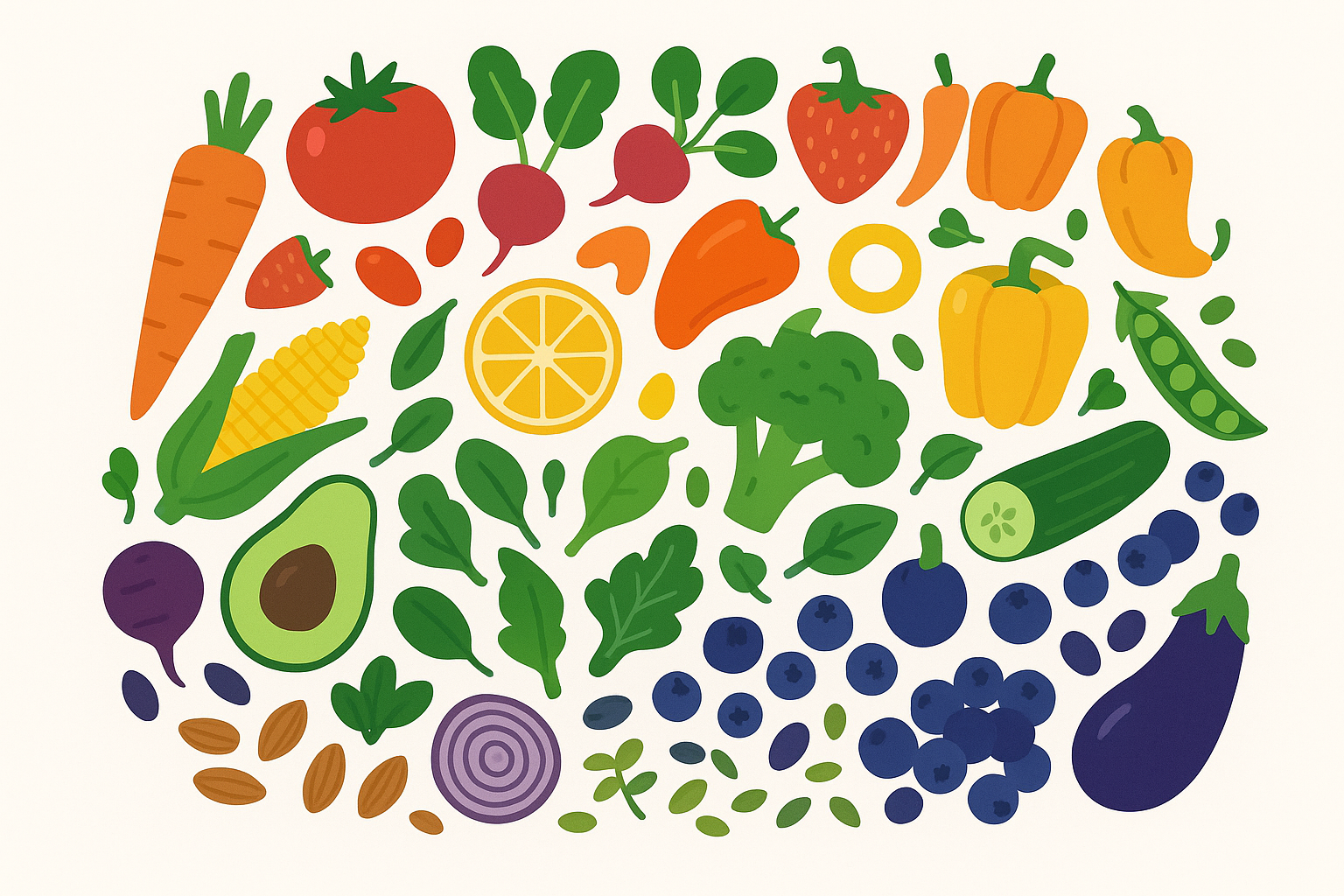
Table of Contents
- The Real Deal About Raw Foods and Your Cellular Health
- Timing Your Raw Meals with Your Body’s Natural Clock
- Eating Raw Through the Seasons Without Losing Your Mind
- Building Your Gut Garden with Living Foods
TL;DR
- Enzymes in food basically quit their jobs when heated above 104-118°F, so keeping things raw actually helps your body process nutrients way better
- Your digestive system has a schedule – eat your heaviest raw meals between 10 AM and 2 PM when your body can actually handle them (not at 8 PM when you’re watching Netflix)
- Seasonal eating isn’t just trendy Instagram nonsense – your body literally needs different stuff in spring (detox greens) versus winter (warming spices and fats)
- Your gut bacteria are picky eaters – different raw foods feed different good bacteria, so variety isn’t just nice, it’s necessary for not feeling terrible
- Fresh is best because enzymes are most active within 4 hours of prep, but smart food combos can help you meal prep without losing all the benefits
The Real Deal About Raw Foods and Your Cellular Health
I used to think raw vegan meal planning was just about avoiding the stove because I was too lazy to cook. Turns out, it’s actually about understanding how these tiny workers called enzymes team up with your cells to help you actually absorb nutrients and not feel like you’re running on empty all the time.
Once you get this connection, everything about raw eating starts making sense instead of feeling like some weird punishment diet. Understanding the fundamentals of raw veganism becomes clearer when you explore simple ways to beat bloat and improve digestion, which totally backs up why raw foods work so well.
The raw vegan lifestyle has gained serious mainstream attention recently, with celebrities like Demi Moore reportedly following this approach. As VegNews reports, Moore has adopted various wellness practices including a vegan diet, though experts emphasize that raw vegan eating must be carefully planned to ensure you’re not accidentally starving yourself of important nutrients.
What is a raw vegan approach exactly? It’s basically eating unprocessed, uncooked plant foods that still have all their natural enzyme activity intact – think of it as eating food that’s still “alive” instead of dead.
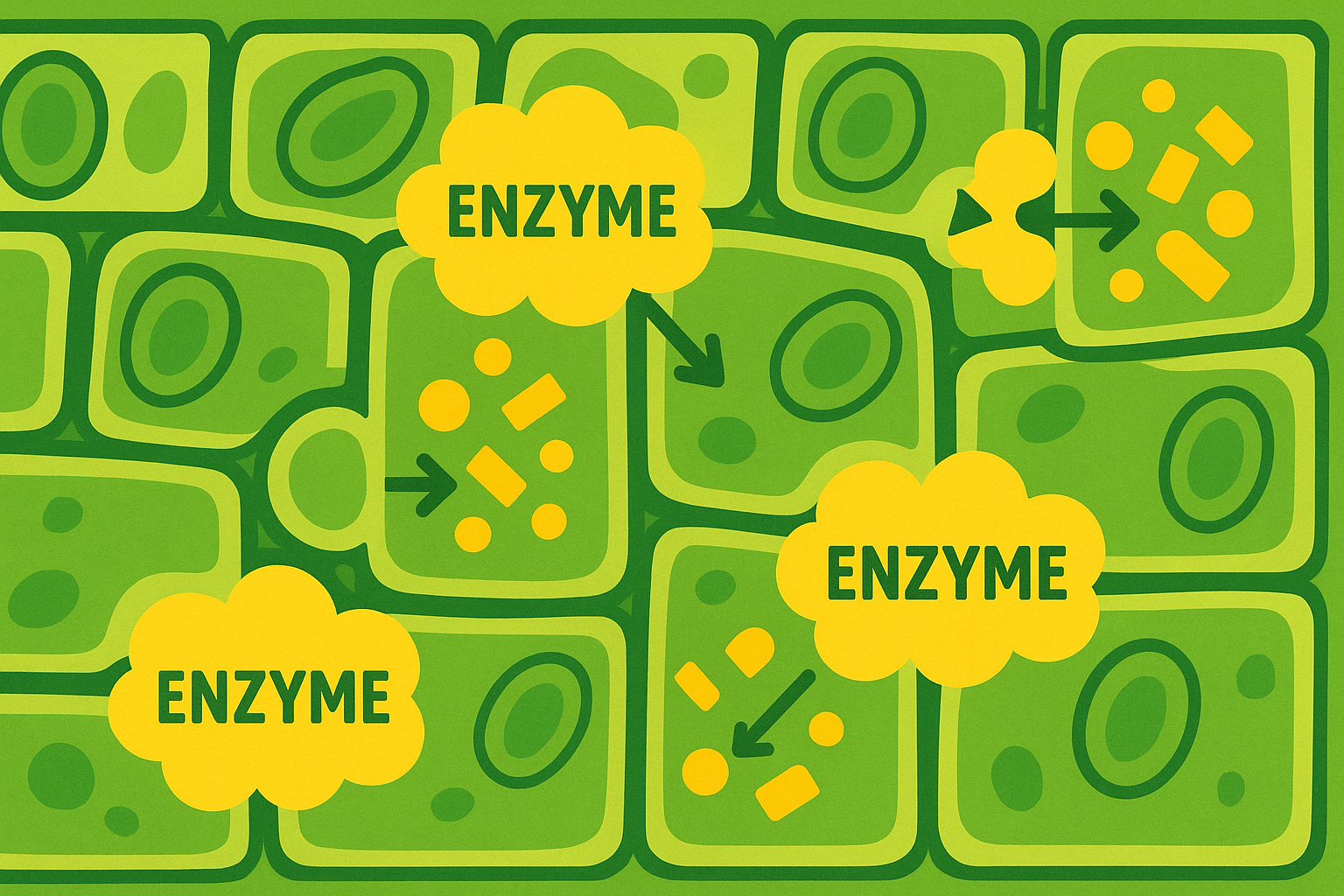
How to Keep Your Food’s Enzymes Alive (Temperature Matters More Than You Think)
Most people don’t realize that enzymes – those tiny workers that help your body actually use the food you eat – start dying off at surprisingly low temperatures. I discovered this when my first attempts at raw vegan eating left me feeling bloated and hangry, like I was eating cardboard.
Understanding which enzymes survive at different heat levels completely changed how my body processed raw foods. Think of enzymes like tiny workers in your food – when you heat them up too much, they basically quit their jobs. And trust me, you want these little guys on your team. According to research published by News Medical, plant-based diets can reduce greenhouse gas emissions by up to 80 percent and water use by up to 50 percent compared to conventional meat-based diets, making raw vegan meal planning both a health and environmental choice.
The raw vegan diet approach requires being a bit obsessive about temperature control, which honestly made me feel like a food scientist for a while.
The Magic Temperature Zone Every Raw Foodie Should Know
Here’s what nobody tells you: different enzymes die at different temperatures, usually somewhere between 104-118°F. I learned to use a food thermometer not just for cooking, but to make sure my “raw” preparations weren’t accidentally killing all the good stuff.
Even things that seem totally harmless can push foods past this critical point if you’re not paying attention. Sun-drying or dehydrating requires constant monitoring, which honestly drove me a little crazy at first.
For instance, when making raw crackers in a dehydrator, I always set the temperature to 105°F maximum and check with an infrared thermometer. I learned this the hard way when my first batch of flax crackers reached 125°F and turned into expensive cardboard that lost all that characteristic raw “snap” and probably most of the benefits I was going for.
Why Pineapple and Papaya Are Your Digestion’s Best Friends
Okay, this is going to sound crazy, but combining specific raw foods creates what I like to call food combos that actually work together. The enzymes in pineapple team up with the ones in papaya to create this protein-digesting powerhouse that makes your raw meals way easier to process instead of sitting in your stomach like a rock.
This discovery totally changed how I approached raw vegan meal planning. Instead of just throwing random fruits and vegetables together and hoping for the best, I started being strategic about combinations.
| Enzyme-Rich Food | Primary Enzyme | Best Paired With | What It Actually Does |
|---|---|---|---|
| Pineapple | Bromelain | Papaya, mango | Breaks down protein so you don’t feel bloated |
| Papaya | Papain | Pineapple, kiwi | Reduces inflammation and aids digestion |
| Kiwi | Actinidin | Berries, citrus | Helps digest protein better |
| Mango | Amylase | Stone fruits | Makes carbs easier to process |
| Avocado | Lipase | Nuts, seeds | Helps your body actually absorb fats |
The 4-Hour Rule That Changed My Raw Food Prep
Here’s something I wish someone had warned me about: fresh enzyme activity peaks within 4 hours of food preparation. This completely changed how I approach meal prep. Instead of making huge batches on Sunday like some kind of raw food prep warrior, I learned to work with this natural timeline.
My raw vegan meal plan now revolves around this timing, which honestly makes meal prep more challenging but way more effective. I prep ingredients in advance but combine them fresh within that 4-hour sweet spot, which means I’m basically always chopping something.
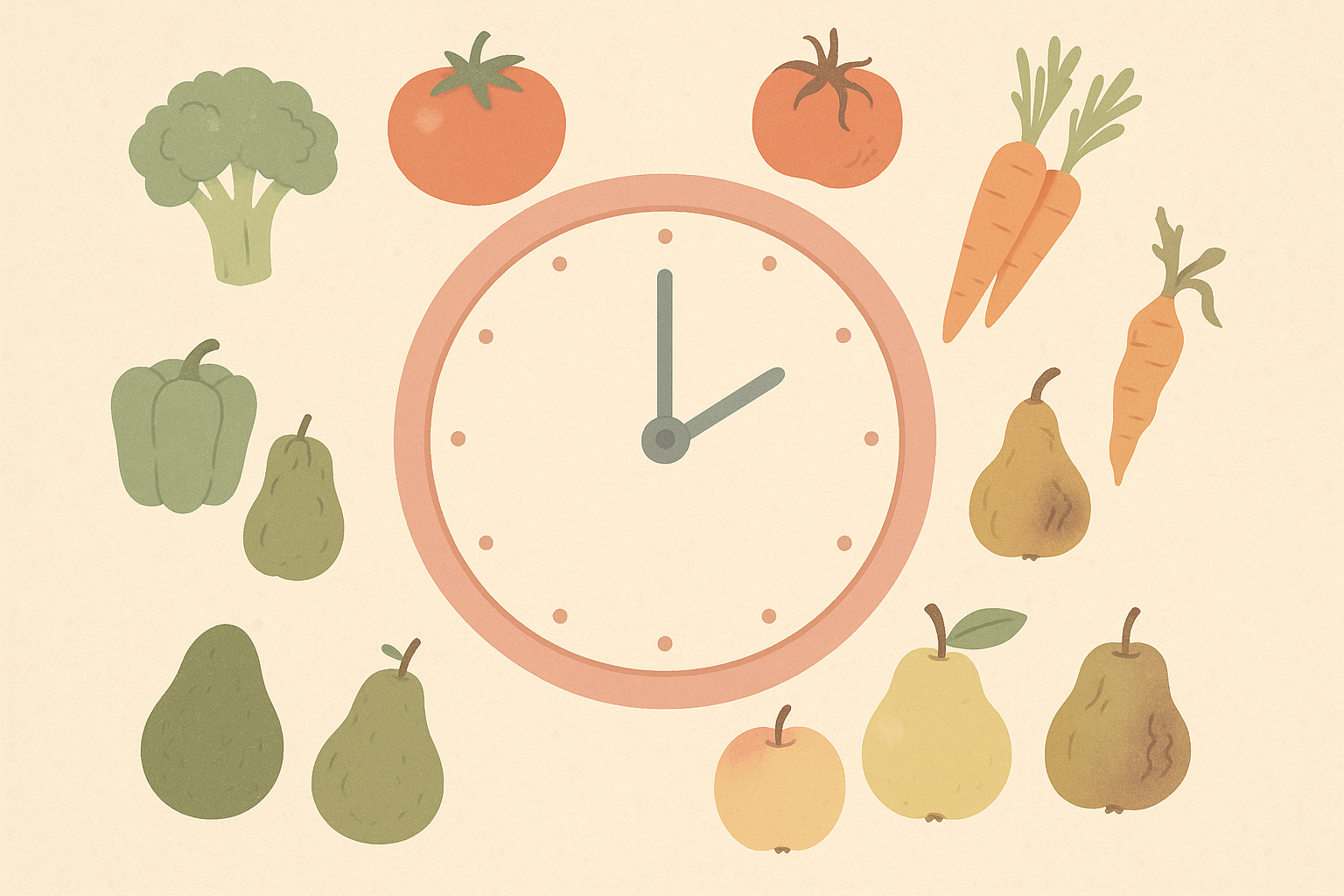
Making Your Body Actually Absorb What You’re Eating
The way you prepare and combine raw foods dramatically affects whether your body can actually use the nutrients inside them, or if you’re just creating expensive poop. Eating raw isn’t enough – you need to understand how to break down plant cell walls without heat, which nobody really explains when you’re starting out.
I spent months eating perfectly prepared raw vegan meals but still felt like I wasn’t getting the nutrition I needed. The problem wasn’t what I was eating – it was how I was preparing it, and I felt pretty dumb when I figured this out.
Breaking Down Plant Walls Without Breaking Your Jaw
Plant cell walls are tough little barriers that lock nutrients inside like tiny safes. There are specific techniques beyond just chewing until your jaw hurts that can help break down these walls without heat, making nutrients way more available to your system.
Take carrots, for example. Raw carrots contain beta-carotene locked inside tough cell walls that your body can barely access. By grating them finely, massaging with a small amount of sea salt for 10 minutes (yes, I massage my vegetables now – don’t judge), then adding a fat source like tahini, I can increase beta-carotene absorption by up to 300% compared to just munching on whole carrot sticks like a rabbit.
The Mineral Game: Why Some Raw Foods Block Absorption
Raw plant foods are tricky little things – they contain both nutrients and what are basically nutrient blockers that can either help or completely mess with mineral absorption. Learning to work with compounds like oxalates, phytates, and lectins through sprouting, soaking, and fermentation lets you optimize your body’s mineral uptake without giving up your raw food principles.
This stuff gets complicated fast, but the basic idea is that plants don’t actually want to be eaten, so they have natural defenses that can interfere with digestion.
Neutralizing the Nutrient Blockers in Your Raw Foods
These so-called anti-nutrients aren’t evil villains, but they can interfere with mineral absorption if you don’t know how to handle them. Sprouting reduces phytates, soaking helps with lectins, and fermentation tackles oxalates – all while keeping your foods completely raw and actually more nutritious than when you started.
Raw Food Prep Checklist (Because I Forget Otherwise):
- ☐ Soak nuts and seeds for 4-12 hours before eating (set a timer or you’ll forget)
- ☐ Sprout grains and legumes for 24-72 hours (your kitchen will smell weird)
- ☐ Ferment vegetables at room temperature for 3-7 days (don’t panic if it bubbles)
- ☐ Massage tough greens with salt for 5-10 minutes (yes, really massage them)
- ☐ Combine iron-rich foods with vitamin C sources (oranges are your friend)
- ☐ Separate calcium-rich and iron-rich foods by 2+ hours (they fight each other)
When Minerals Fight Each Other (And How to Stop It)
Certain minerals compete for the same absorption pathways in your gut, which means timing actually matters more than I thought. Iron and zinc basically duke it out for absorption, calcium can block magnesium – understanding these relationships helps you structure your raw meals so you actually absorb what you’re eating instead of just creating expensive pee.
My raw vegan meal plan now separates competing minerals by at least two hours, which makes eating feel like a strategic game sometimes.
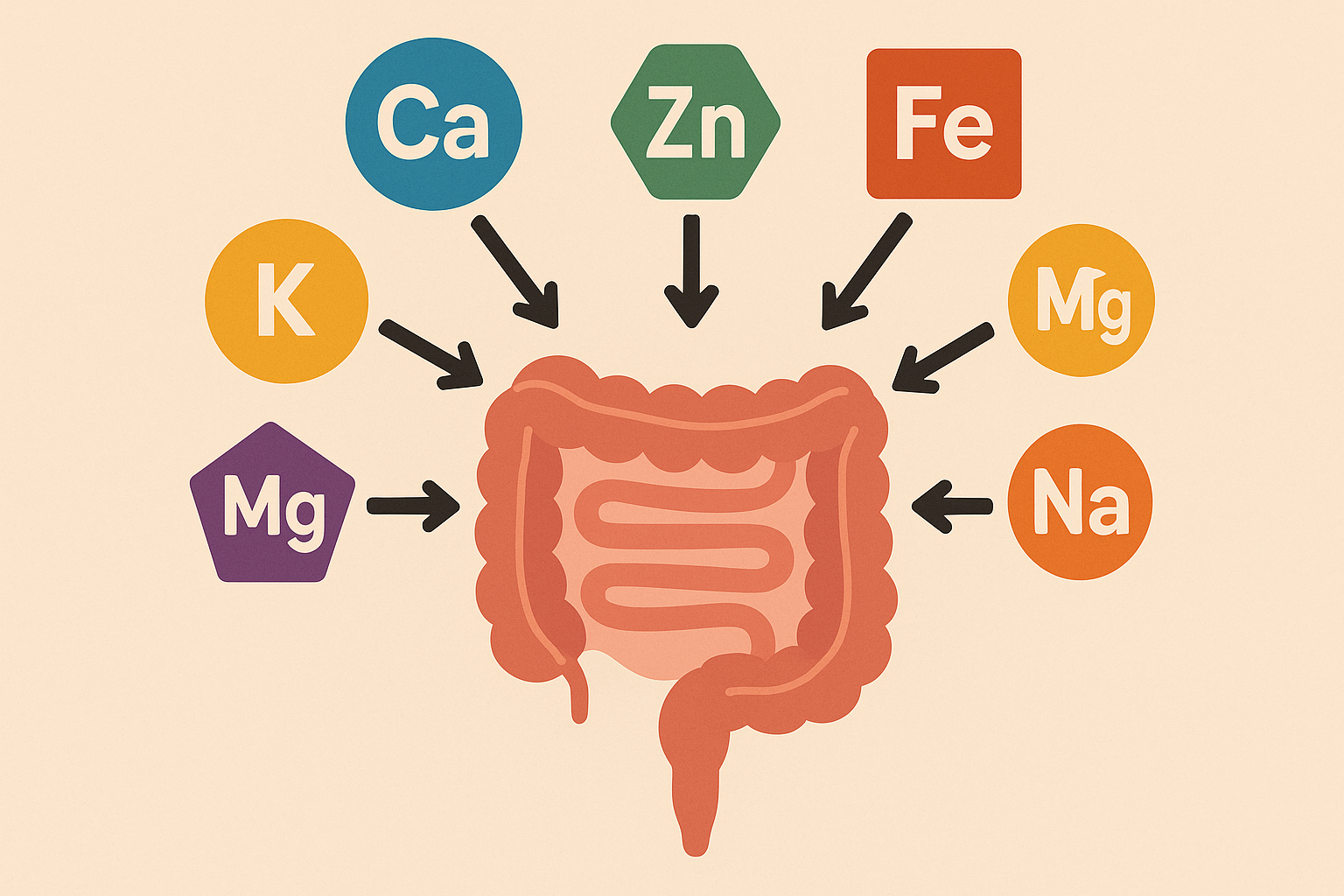
Timing Your Raw Meals with Your Body’s Natural Clock
Your digestive system isn’t the same at 7 AM as it is at 7 PM – it operates on a 24-hour cycle with different enzyme production, stomach acid levels, and metabolic rates throughout the day. Once I started aligning my raw vegan meal planning with these natural rhythms instead of just eating whenever I felt like it, my digestion improved dramatically and my energy became way more stable.
The timing principles behind raw vegan eating align perfectly with intermittent fasting strategies for women, creating a approach that actually works with your body instead of against it.
Fighting against your body’s natural rhythms makes even the best raw vegan diet feel like an uphill battle. Once you understand these patterns, the whole approach becomes way less forced.
Morning: When Your Digestive Fire is Just Waking Up
Your digestive system awakens gradually, which means throwing a massive raw meal at it first thing in the morning is like asking someone to run a marathon right after they wake up. The key is using specific types of raw foods that gently wake up your enzyme production without overwhelming your system.
I used to force down massive green smoothies first thing in the morning and wonder why I felt sluggish and slightly nauseous for hours afterward. Turns out, raw vegan mornings require a gentler approach that doesn’t shock your barely-awake digestive system.
From Liquid to Solid: The Morning Transition Your Gut Craves
I start with enzyme-rich fruit waters and green juices, then transition to solid raw foods following a 30-60-90 minute progression. This honors your body’s awakening digestive capacity instead of shocking it with a massive raw salad when it can barely function yet.
The popularity of raw vegan breakfast options has exploded, with food bloggers showcasing everything from raw vegan carrot cake to three-ingredient banana pecan paletas according to Brit + Co, which shows that raw morning meals can actually be satisfying when you’re not forcing your body to process complex foods before it’s ready.
My raw vegan meal plan starts gentle and builds intensity as my digestive system comes online, which honestly took some trial and error to figure out.

Midday: When Your Digestive Power Peaks
Between 10 AM and 2 PM, your digestive fire burns strongest – this is when your body can handle your most complex raw food combinations and highest calorie intake. Missing this window means you’re fighting against your natural rhythms instead of working with them, which is just making things harder than they need to be.
Complex carbohydrates from raw root vegetables, sprouted grains, and fruit-heavy meals should happen during these peak digestive hours. Your body can most efficiently process complex sugars and starches when your metabolic fire is at its strongest, not when it’s winding down for the evening.
That whole “eat your biggest meal at lunch” thing? Yeah, tell that to my boss who schedules meetings during my “optimal digestion window.” Sometimes you eat when you can eat, but when possible, this timing makes a huge difference.
Why Your Biggest Raw Meal Should Happen at Lunch
I learned this through trial and error – eating my largest raw vegan meal at lunch instead of dinner completely transformed my energy levels and sleep quality. It felt weird at first because we’re conditioned to eat big dinners, but my body adapted pretty quickly.
The Protein Sweet Spot Your Muscles Are Waiting For
Raw protein sources like sprouted legumes, nuts, and seeds need to align with your body’s peak amino acid utilization periods. Getting this timing right supports muscle maintenance and cellular repair way better than just randomly eating protein throughout the day and hoping for the best.
Research indicates that individuals following well-structured plant-based diets can reduce their dependence on medications for chronic conditions like hypertension and diabetes, as reported by News Medical, highlighting why properly timed raw vegan meal planning can be genuinely therapeutic.
Evening: Winding Down Without Weighing Down
As your digestive capacity naturally decreases in the evening, your raw meal plan should shift toward easily digestible, mineral-rich foods that support overnight cellular repair. Fighting against this natural wind-down just leads to poor sleep and feeling like garbage in the morning.
The 3-Hour Rule That Transformed My Sleep
Stopping solid raw food intake 3 hours before sleep optimizes both digestion and sleep quality. I learned which liquid raw foods can be consumed closer to bedtime without disrupting rest, and this simple change made my mornings so much better that I actually became a morning person (which shocked everyone who knows me).

Eating Raw Through the Seasons Without Losing Your Mind
Your body’s nutritional needs shift dramatically with seasonal changes in daylight, temperature, and natural food availability. I used to try forcing the same raw foods year-round like some kind of food robot, but adapting my raw vegan meal plan to natural cycles supports my body’s seasonal metabolic shifts while maintaining raw food principles.
Seasonal raw eating becomes more manageable when you understand how to choose the healthiest greens powder to supplement your fresh seasonal produce during transitional periods when you can’t find decent raw vegetables anywhere.
The raw vegan diet doesn’t have to be monotonous or completely disconnected from what’s actually growing outside your window. Adapting to seasons prevents that raw food burnout that makes you dream about grilled cheese sandwiches.
Spring: Your Body’s Natural Detox Season
Spring’s natural detox energy requires specific raw foods that support liver function and lymphatic drainage while providing gentle energy for seasonal cleansing. Working with this natural tendency instead of against it makes spring cleaning feel effortless rather than like some kind of medieval torture.
Raw vegan spring eating focuses on bitter greens and cleansing foods that support your body’s natural detoxification processes, which honestly taste terrible at first but you get used to them.
Why Bitter Greens Are Your Spring Superpower
Progressively introducing bitter greens like dandelion, arugula, and wild herbs stimulates bile production and supports your liver’s natural spring detoxification process. Start small though – your taste buds and digestive system need time to adapt to these powerful cleansing foods, or you’ll feel like you’re eating lawn clippings.
I create a “bitterness ladder” each spring, starting with mild arugula in week one, adding dandelion greens in week two, then incorporating wild nettle and chickweed by week four. By gradually increasing bitter compounds, my liver function improves without those harsh detox symptoms that make you feel like you’ve been hit by a truck.
Moving Your Lymph with Raw Food Power
Raw foods high in potassium and natural diuretics support lymphatic drainage without depleting essential minerals during spring cleansing. This gentle approach works with your body’s natural detox mechanisms instead of forcing harsh cleanses that leave you depleted and cranky.
Summer: Cooling Down from the Inside Out
Hot weather requires raw foods that cool your body internally while preventing dehydration and maintaining electrolyte balance through natural sources instead of those gross sports drinks. The key is understanding which raw foods actually cool you down versus just being cold temperature-wise.
Summer is honestly the easiest season for raw vegan eating because everything you want is naturally abundant and your body actually craves cold foods.
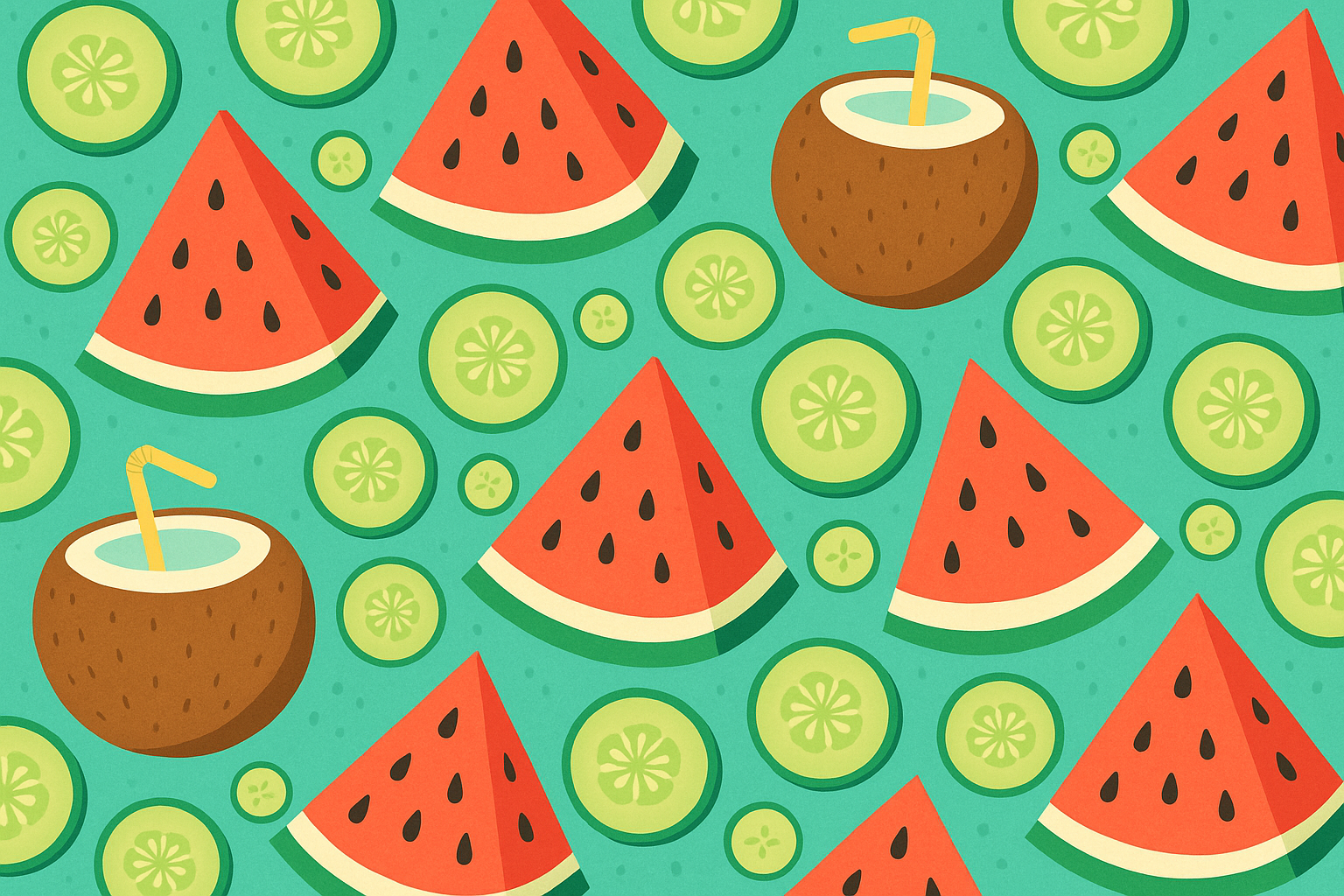
Natural Electrolyte Balance Without the Sports Drinks
Maintaining sodium, potassium, and magnesium balance through coconut water, celery juice, and mineral-rich raw foods during high-temperature periods keeps you hydrated and energized. Commercial electrolyte drinks can’t compete with what nature provides when you know how to use it properly.
| Season | Primary Focus | Key Raw Foods | Preparation Method |
|---|---|---|---|
| Spring | Detoxification | Bitter greens, sprouts, citrus | Light salads, fresh juices |
| Summer | Cooling & hydration | Cucumber, watermelon, coconut | Cold soups, smoothie bowls |
| Fall | Grounding & warming | Root vegetables, nuts, seeds | Marinated salads, nut cheeses |
| Winter | Warming & nourishing | Sprouted grains, warming spices | Fermented foods, spiced smoothies |
Winter: Staying Warm While Staying Raw
Maintaining raw veganism in cold weather requires understanding which raw foods generate internal heat and how to prepare warming raw meals that satisfy your body’s need for comfort food. It’s totally possible, but you need the right strategies or you’ll be miserable.
Winter raw eating is rough, folks. When it’s 20 degrees outside, a cold salad feels like punishment, and I discovered that “warming spices” don’t actually make you physically warm. Who knew?
Raw Foods That Actually Warm You Up
Certain raw spices, fats, and food combinations naturally increase your metabolic rate and internal heat production during cold seasons. Ginger, cayenne, raw cacao, and healthy fats can make raw meals feel satisfying and warming even when it’s freezing outside and you’re questioning your life choices.
Beating the Winter Blues with Raw Food Medicine
Raw foods high in tryptophan, B-vitamins, and natural mood stabilizers support mental health during low-light winter months. Seasonal Affective Disorder doesn’t have to derail your raw food journey if you know which foods naturally boost mood and energy when everything outside looks dead.
According to Berry Street, 95% of patients pay $0 out of pocket when they see a dietitian, making professional guidance for seasonal raw vegan meal planning more accessible than many people realize, which is honestly helpful because winter raw eating can get complicated.
Building Your Gut Garden with Living Foods
Your gut microbiome is a complex ecosystem that raw vegan foods can either nurture or completely mess up depending on how you approach it. Understanding how different raw foods feed beneficial bacteria while starving harmful ones lets you use your meal plan as a tool for cultivating optimal gut health instead of accidentally creating digestive chaos.
The gut health benefits of raw foods are enhanced when you understand drinking vinegars as the next big thing for gut health, which can complement your raw fermented foods perfectly and taste way better than you’d expect.
Raw vegan meal plan success depends heavily on gut health optimization, which sounds fancy but basically means keeping your digestive system happy so you don’t feel terrible all the time.
Feeding Your Good Bacteria the Right Fiber
Raw plant foods contain diverse fiber types that feed different bacterial species, but not all fiber is created equal. Strategic meal planning ensures you’re feeding a wide variety of beneficial bacteria while maintaining digestive comfort – because what’s the point of healthy gut bacteria if you’re bloated and miserable?
Too much fiber too fast will make you very unhappy. Learn from my mistakes, people.
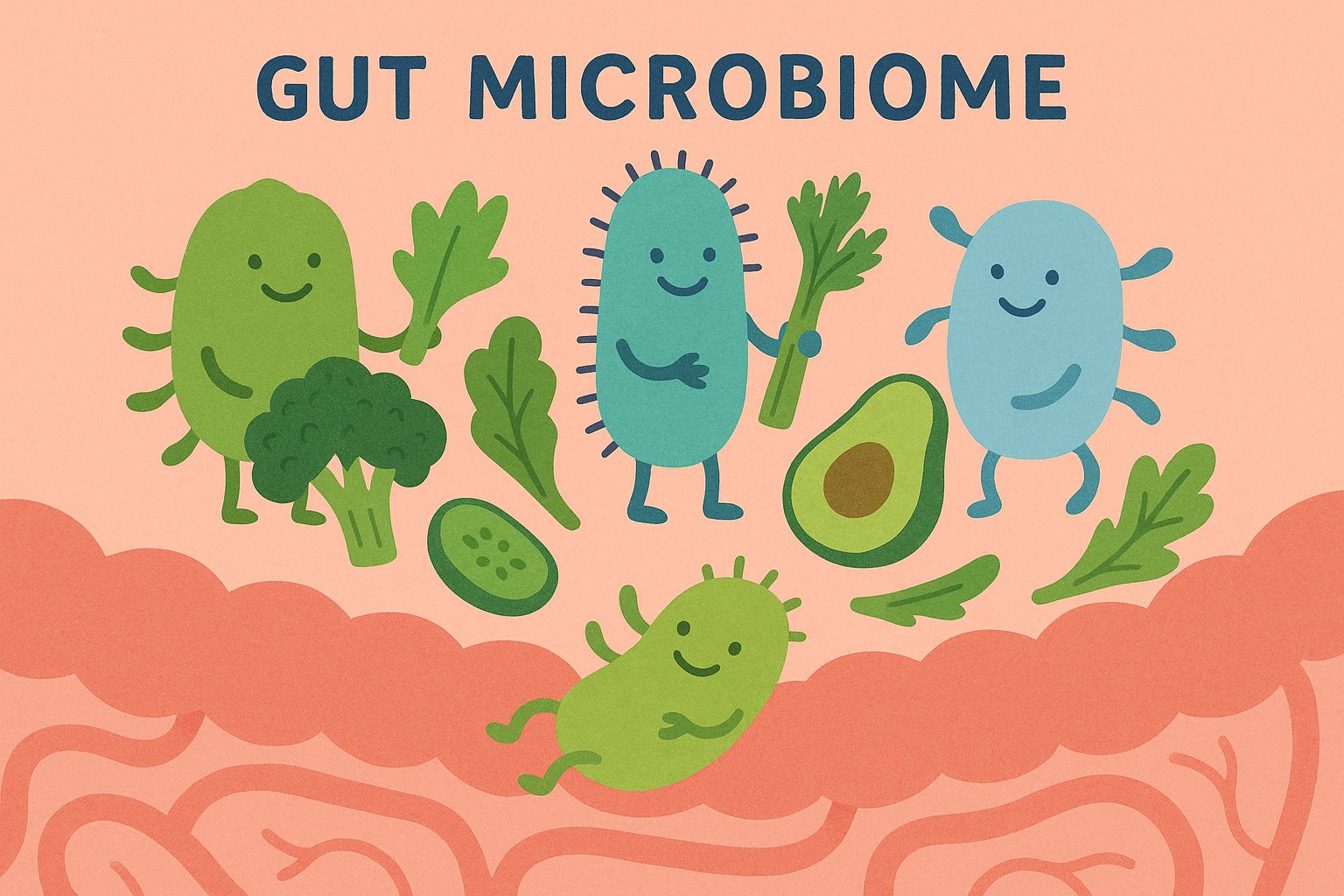
The Resistant Starch Secret Weapon
Raw resistant starches from green bananas, raw potatoes, and other sources feed beneficial bacteria, but timing matters or you’ll spend quality time in the bathroom. Eating these at optimal times prevents digestive distress while maximizing the prebiotic benefits that keep your gut bacteria happy and thriving.
Gut-Friendly Raw Food Timing Checklist:
- ☐ Consume resistant starches (green bananas, raw potatoes) in the morning when your digestion is strongest
- ☐ Space fermented foods 4+ hours apart from other meals (they need their own time to shine)
- ☐ Introduce new prebiotic foods gradually over 2-3 weeks (your gut needs time to adapt)
- ☐ Combine soluble and insoluble fiber sources at each meal (variety is key)
- ☐ Drink plenty of water 30 minutes after fiber-rich meals (help things move along)
- ☐ Monitor digestive response and adjust portions accordingly (listen to your body)
Why Your Gut Bacteria Need a Rainbow Diet
Different colored raw fruits and vegetables provide specific polyphenols that support different bacterial strains. This means rainbow-based meal planning isn’t just Instagram-worthy – it’s actually necessary for optimal microbiome diversity and not feeling like garbage.
Adding Living Cultures to Your Raw Food Mix
Raw fermented foods provide living probiotics that complement your fresh raw foods, but timing and combination strategies are crucial for maximizing their beneficial effects. You can’t just throw kimchi on everything and expect miracles, though I definitely tried this approach.
Raw fermentation techniques work hand in hand with understanding how to improve gut health with emerging science, creating a comprehensive approach to digestive wellness that actually makes sense.
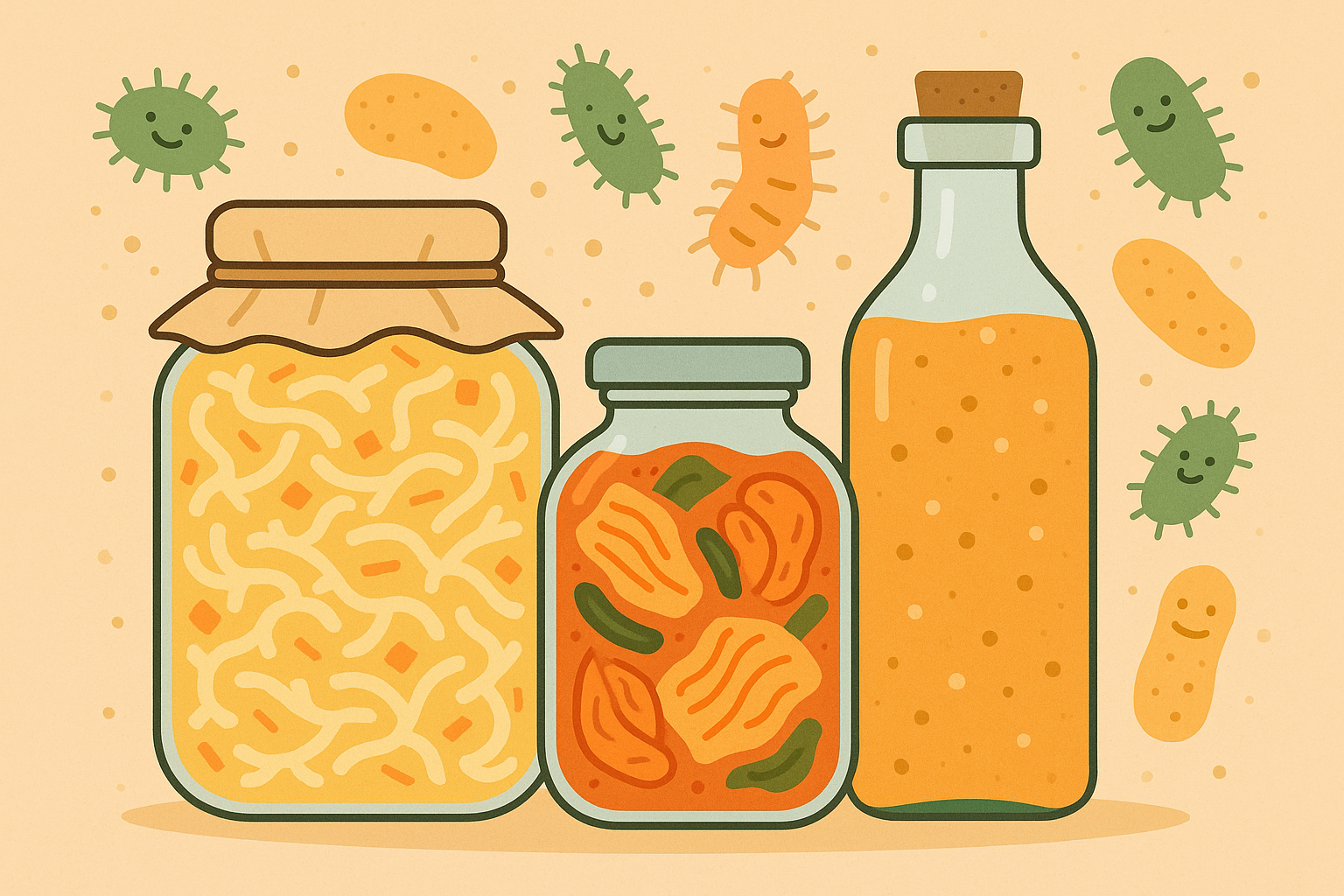
Keeping Your Probiotics Alive and Kicking
Maintaining probiotic viability in fermented raw foods requires specific techniques, and different preparation methods affect bacterial survival and colonization. Understanding these factors helps you get the most from your fermented foods instead of just eating expensive, dead bacteria that do nothing for you.
I accidentally fermented something for three weeks once. It looked like a science experiment gone wrong and smelled worse, but hey, at least I learned what not to do.
The pH Balance Your Gut Bacteria Crave
Raw food combinations affect your gut pH, and beneficial bacteria need the optimal acidic environment to thrive while preventing harmful bacterial overgrowth. Getting this balance right creates the perfect growing conditions for your internal garden instead of accidentally growing the wrong stuff.
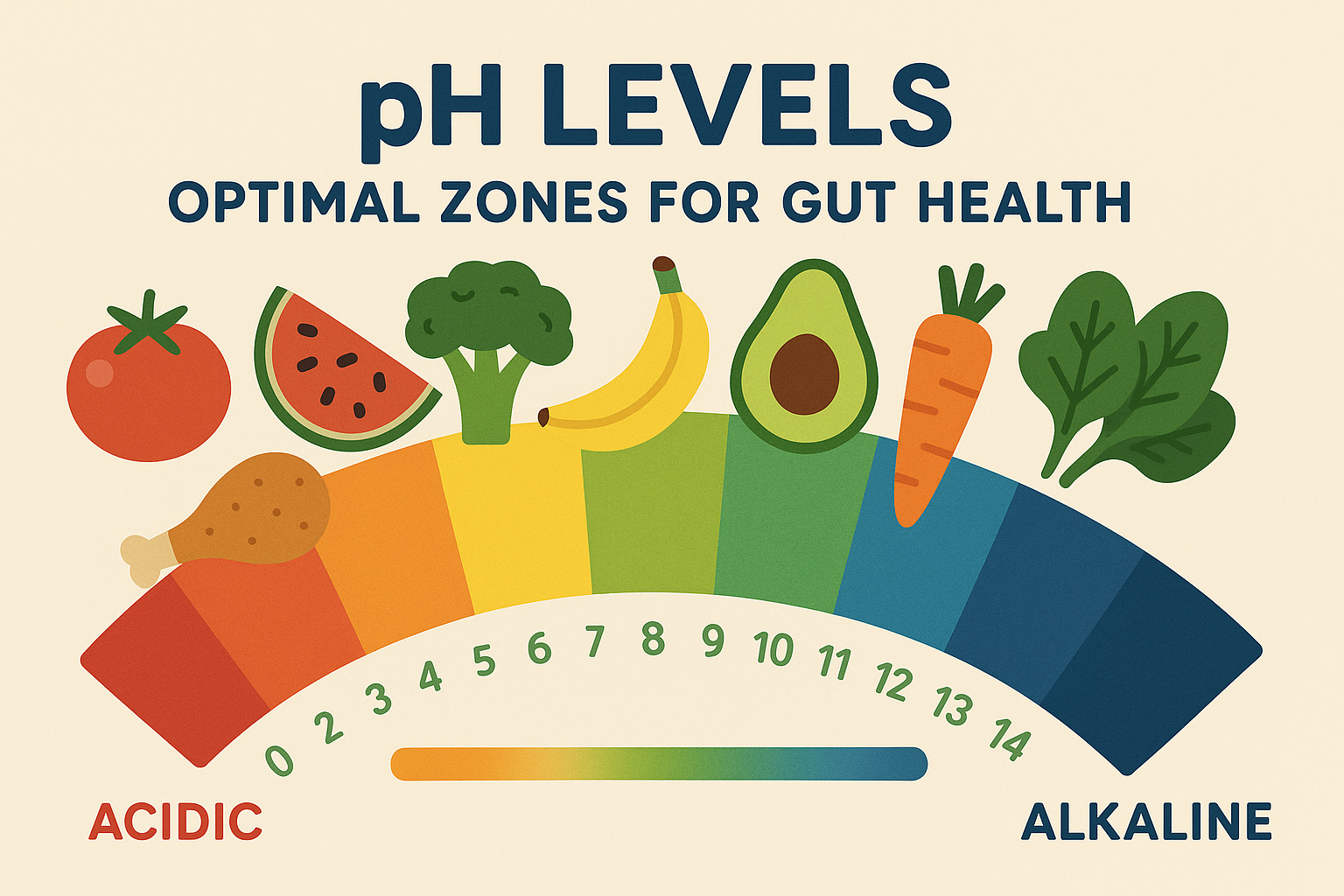
Final Thoughts
Raw vegan meal planning isn’t just about following rules or being perfect – it’s about understanding how your body actually works and feeding it accordingly without making yourself crazy in the process. When you align your eating with natural rhythms, seasonal changes, and your gut’s ecosystem needs, raw foods become medicine instead of just restriction and deprivation.
The enzyme preservation, circadian timing, and microbiome cultivation strategies I’ve shared here transformed my relationship with raw foods from constant struggle to something that actually flows with my life. Your body has incredible wisdom when you learn to listen to it and support it properly instead of fighting against it.
Don’t expect to feel amazing on day three though. I felt like garbage for about two weeks while my body figured out what the hell I was doing to it, and that’s totally normal.
If you’re feeling overwhelmed by all the moving pieces of optimal nutrition, exploring marine collagen peptides and their beauty benefits can provide additional support while you’re mastering these raw food strategies and trying not to lose your mind.
Ready to transform your raw vegan meal planning? Start with one strategy that resonates most with you – whether it’s timing your meals with your circadian rhythms or adding more fermented foods to feed your gut bacteria. Small, consistent changes create lasting transformation, and you don’t have to be perfect right away.
Look, this isn’t magic. Some days you’ll feel amazing, some days you’ll want to face-plant into a pizza. But if you stick with it and find what works for YOUR body (not what works for some Instagram influencer), you might just surprise yourself. And if not? At least you’ll have some interesting stories to tell and probably really good skin.

